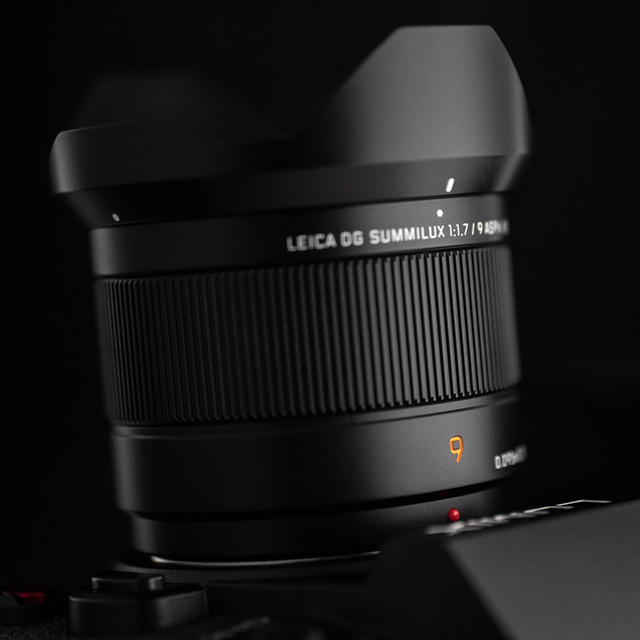How to clean your lenses
A clean lens is a happy lens - and a happy photographer, says Damien Demolder. Keeping your lenses dust- and dirty-free is easy and doesn’t take long. Here’s how.

Modern lenses are very well made and are much more durable than most people think. It pays though to take care of them so we can ensure they are in prime condition to deliver the best possible image quality. Getting into a regular cleaning routine with a few simple tools is a very good habit to have, and putting a couple of minutes aside will allow you to keep on top of things so your lenses never have to get into a poor state.
It is one thing to check a lens is clean right before you mount it to the camera, but if you are out in the field at the time you find it’s filthy you may have left it too late as a wipe with the tails of your shirt may not do the trick. I try to check and clean my lenses every time they go into the bag and come out of the bag. That might sound excessive, but I also know it won’t actually happen EVERY time, so even when I’ve missed a lens a couple of times it won’t be long before it gets some attention.
Keeping all your kit clean and checked means there is much less chance it will let you down when you need it most, and you can reduce service intervals and costs because you are regularly keeping your kit well maintained. You will also dramatically reduce the likelihood of experiencing the moment you are looking at a picture on-screen and wondering why there’s a glowing mist over the whole image.
Work area
Obviously if your work area for cleaning your kit is covered in dust you may end up with a dirtier lens at the end of the process than you started with, so make sure you clean around yourself first. A kitchen is a good place to work as they tend not to have carpets and the hard surfaces are easy to wipe. Wash the work surface well to ensure it is free from grease and crumbs, and you may also earn yourself some Brownie points if you are not usually the person who cleans the kitchen.

Kit you will need:
- Medium sized soft paint brush
- Small soft paint brush
- Blower
- Lens wipes
- Soft lint-free lens cloth
- Good light
Step One: Clean the barrel

The first thing I do is clean the barrel of the lens with a medium sized soft paint brush. I use this to sweep dust and dirt from the ribbed areas of the focusing and aperture rings, and to clean around moving parts. With the front- and back-caps on sweep the length of the barrel in both directions. If your zoom trombones do this with the lens in its most compact position.

Once you are happy the barrel is clean pay attention to the moving parts. Turn your zoom ring to expand the barrel – if your lens gets longer during zooming – and gently sweep the dust from the expended area. If your lens has a focus ring that pulls back for manual operation check underneath that as well.
Then pay attention to the front and back caps, by sweeping them clean while they are still in position on the lens.
You should now have a lens that is clean and dust-free on the outside.
Step Two: Cleaning the front element
The most important thing to remember here is that we need to avoid rubbing any glass area on our lens with the grit that has built up on it. That grit might be extremely fine and hard to see, but we should assume it is there all the same. If you have been taking pictures by the sea, on the beach or on a windy day in a dry landscape environment there will be grit of some form on and around your front element.

Before we do anything we need to blow that grit off. As tempting as it is to blow on the lens with our mouth try to resist at this stage. No matter how careful you are, you will spit on the lens and we need it to remain as dry as possible. A mechanical blower is ideal. I use a large rubber blower that delivers a blast strong enough to shift the dirt without forcing it into gaps. You might also find it useful to hold the lens upside down to blow up, which will help heavier items fall off the lens rather than just getting blown around.
Once you’ve given the front element a good blow use the smaller paint brush (mine is about 15mm wide) to sweep away any debris that is left, using light flicks of the bristles. The brush will allow you to get into the filter thread to remove any lurking dust and grit trying to evade your attention.

Hopefully at this stage you can give the front element a quick polish with a soft cloth and a final blast with the blower and it will be spotless. Occasionally though you’ll have a finger print or some cake on the glass that will need a little more help. You can use a cloth damp with water on the lens to remove non-greasy marks but oil, fats and finger prints really need something a little more convincing. Using a dry cloth on oil might smear it to the point that you can’t see it anymore, but the oil will still be there and will reduce the contrast and sharpness of your images. It can also create flare as the light catches it.
To remove oil and grease use an alcohol-based cleaning wipe. While there are lots of domestic wipes on the market its best to pick ones that are designed specifically for cleaning lenses, as some others are fragranced or are designed to moisturise the surface too – which clearly would not be good for lenses. I use Zeiss wipes which are excellent. Give the lens a quick blast with the blower to make double sure there’s no grit on the surface and then wipe the lens.
We wipe the front element starting in the middle, and making small circles that gradually get wider. If there is grit it will probably be where the lens meets its housing, so we leave that bit until last to avoid rubbing the grit into the whole lens.
An alcohol wipe will leave the front element dry in a few seconds, and shouldn’t leave any residue, but give the lens a quick polish with your soft clean cloth just to make sure.
Step Three: The lens cap

There is no point cleaning your lens and then sticking a dust-filled lens cap back on it, so the next step is to get that clean. Usually a blower is enough to blast all the pocket-lint out of the mechanism, and it shouldn’t take you more than a few seconds to restore it to sparkling condition. Then you can put it back in place on the front of the lens.
Step Four: The rear element
Many photographers assume that as the rear element of a lens is exposed to the elements less it doesn’t need any attention. Of course that is wrong, and we need to give the back of the lens as much love and care as the front. A friend of mine shot over two hundred pictures with Caesar salad dressing on the rear element of his lens because he only cleaned the front element after dropping the lens in a cruiseship passenger’s dinner. He quickly retrieved the lens and stuck it on the camera, only then cleaning it. He cleaned what he could see, but of course missed the hidden rear element, and as he was using a rangefinder didn’t notice until it was too late.

Rear elements are always smaller than front elements, but the same light has to pass through them so it is actually more important to keep them clean. The same finger print on a rear element covers a much greater proportion of the glass surface than it would on a front element, so is much more dangerous. And dust and dirt from the rear element can easily get transferred to your camera’s sensor too.

Clean your rear element using the same process as it outlined in Step Two above. And then clean the rear cap too.

Step Five: Get into a routine
Your lenses won’t need a full clean every time you use them, but it pays to give them a quick check over each time to make sure they are in the best condition to deliver what they are supposed to. Keeping them dust- and grease-free keeps resolution high, flare low and helps you to get the picture quality you paid for.
Lumix Experience Facebook Group
If you have any questions on this piece, or any other, join the Lumix Experience Facebook Group where you’ll find other Lumix users and Lumix experts who will be delighted to help.






